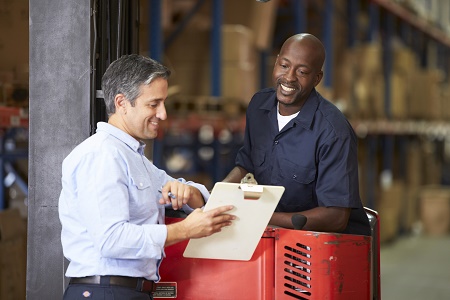Preventing Forklift Accidents
Forklifts are amazing mechanical inventions, designed to streamline and simplify material handling processes, but they are also – like any piece of heavy machinery – dangerous when not handled correctly. When used properly, a forklift can make an entire day’s worth of work a matter of an hour or two, shifting and organizing inventory in neat rows and stacks. Carelessness, however, can cause significant danger and injury. How can you minimize the chances of a harmful incident in your warehouse or loading bay?

Do a Complete Forklift Check Every Day
Making sure the forklift is in proper working order should be step one, every morning before anyone starts operating it.
- The tires should be checked for proper inflation using the appropriate PSI gauge. Too much inflation is just as bad as too little – over inflated tires can explode – so know what the proper inflation is before adding air.
- Ensure that the fluids are checked for proper levels (especially any having to do with hydraulics as well as oil and antifreeze). Overheating or freezing up in hot or cold working environments contributes to many forklift incidents every year, although not as many as running a forklift off of a dock.
- All lights should be tested as well as auditory bells and whistles. The backup sensor should be tested before heading off the work for the day.
- Put the fork up and down, and test the steering with tight circles right and left. If everything checks out the forklift is safe to use.
Pay Attention
All forklift operators should pay attention not only to their surroundings but to what is going on with the forklift itself. Dash gauges exist for a reason, to serve as an early warning system if something goes wrong. Hands should be kept on the controls at all time when the forklift is in motion or parts are moving. Focus should move continually from the inside of the cab to the outside, and the surrounding area should be checked as well in case something or someone enters the field of motion. Look out for:
- Warning lights or beeps inside the forklift
- Shouts or yells from outside the forklift
- Unexpected motions, such as an employee getting too close, or a stack of material starting to fall.
Make sure every Operator is Forklift Certified
There’s a very fast way to get sued or to incur an OSHA fine – and that is having an un-certified person driving a forklift. Make sure every employee that might possibly be asked to move a forklift has their certification for forklift operation, and avoid fees and lawsuits.
